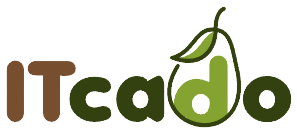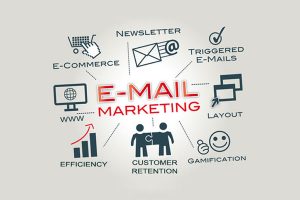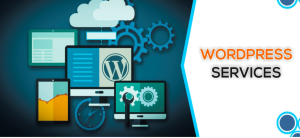The Ultimate Guide to BigCommerce Theme Development
A visually appealing and user-friendly site is necessary for success. It’s one of the leading e-commerce platforms and provides robust tools for developing online stores. However, customizing your store’s layout is essential to stand out and craft a unique brand experience. This comprehensive guide will dive into BigCommerce theme development, exploring everything you need to know to get started.
Understanding Its Layouts
Before diving into layout advancement, it’s essential to understand its layouts and how they function. Themes in it dictate your online store’s overall design, layout, and functionality. They consist of files, including HTML, CSS, JavaScript, and images, that determine how your store looks and behaves.
It offers a variety of pre-built layouts that you can choose from to set up your store quickly. However, BigCommerce development services is how to create a truly unique brand experience. Custom layouts give you full control over every aspect of your store’s design and functionality.
Getting Started with Theme Development
Setting Up Your Advanced Environment
The first step in layout advancement is setting up your development environment. You’ll need a code enhancer like Visual Studio Code or Sublime Text to write and edit your layout files. Additionally, you’ll need a local advancement server to test your changes before deploying them to your live store.
It provides a local advancement tool called Theme Developer Toolkit (TDK), which allows you to develop and test layouts locally before pushing them to your store. Install TDK and follow the setup instructions to get started.
Understanding the Structure
Before diving into coding, it’s essential to understand the structure of its layout. At its core, it consists of several key components:
- Templates: These are the main HTML files that determine the layout of your store pages, such as the homepage, product page, and cart page.
- Stylesheets (CSS): These files control the visual appearance of your store, including colors, fonts, and layout.
- JavaScript (JS): JS files add interactivity and functionality to your store, such as sliders, dropdown menus, and product filters.
- Images include logos, product images, and background images used throughout your store.
Customizing Your Theme
Once you’re familiar with the structure of its layout, it’s time to start customizing. Here are some common customization tasks you may want to consider:
- Changing multiple colors and fonts to match your brand identity.
- Customizing the layout of your homepage and product pages.
- Adding custom navigation menus and footer sections.
- Integrating third-party apps and extensions for additional functionality.
- Optimizing your layout for mobile devices will confirm a seamless shopping experience on phones and tablets.
Testing Your Theme
After making changes to your layout, it is crucial to test it to confirm that everything is working properly and thoroughly. Use the built-in preview feature to see how your changes look in your live store. Additionally, test your layout on different devices and browsers to ensure compatibility.
Deploying Your Theme
Once you’re satisfied with your layout, it’s time to deploy it to your live store. Its layout management dashboard makes this process easy. Upload your layout files, set it as the active layout, and your changes will go live instantly.
Unlocking the Benefits
In the competitive landscape of e-commerce, where first impressions are everything, the importance of a captivating and user-friendly online store cannot be overstated. It is a leading e-commerce base that offers a robust ecosystem for businesses to thrive online. In comparison, their pre-built layouts provide a solid foundation; the true potential lies in custom BigCommerce theme development. Let’s explore the benefits of taking the customization route:
Tailored Brand Experience
Custom layout advancement empowers businesses to craft a tailored brand experience that resonates with their target audience. You can assemble a cohesive and memorable online presence by aligning the visual elements, layout, and functionality with your brand identity. From colors and typography to imagery and navigation, every aspect of your store can be customized to reflect your unique brand personality.
Enhanced Functionality
One size does not fit all when it comes to e-commerce functionality. Custom layout advancement allows businesses to integrate specific features and functionalities tailored to their needs. Whether it’s advanced product filtering, seamless checkout processes, or integration with third-party tools and services, custom layouts enable businesses to provide a seamless shopping experience that caters to their customers’ preferences.
Improved Performance and Scalability
Performance is paramount in the world of e-commerce. Advances in custom layouts enable businesses to optimize their online stores for speed and scalability. By adhering to best practices in coding and optimization techniques, custom layouts can deliver faster load times, smoother navigation, and improved overall performance. Moreover, as your business grows, custom layouts can easily adapt and scale to accommodate increasing traffic and demand.
SEO-Friendly Design
Search engine optimization (SEO) drives organic traffic to your online store. Custom layouts offer the flexibility to implement SEO best practices from the ground up. From clean and semantic HTML markup to mobile-responsive design and fast page load times, custom layouts are inherently optimized for search engines, helping your business rank higher in search results and allure more potential customers.
Seamless Integration
In today’s interconnected digital ecosystem, seamless integration with third-party tools and services is essential for maximizing efficiency and functionality. Custom layouts make it easier to integrate with a wide range of offerings, including payment gateways, shipping providers, marketing automation channels, and more. Whether adding custom analytics tracking code or integrating with your preferred CRM system, custom layouts provide the flexibility to seamlessly connect your store with the tools you rely on to run your business.
Greater Control and Flexibility
One of the most significant advantages of custom layout advancement is the unparalleled level of control and flexibility it offers. Unlike pre-built layouts, which may have limitations in terms of customization options, custom layouts put you in the driver’s seat. From layouts to functionality and user experience, you have full control over every aspect of your store’s appearance and behavior. This level of customization allows you to adapt quickly to changing trends, user feedback, and business requirements, ensuring your store remains relevant and competitive in the ever-evolving e-commerce landscape.
Long-Term Cost Savings
While custom layout advancement may require a higher upfront investment than pre-built layouts, it can result in significant long-term cost savings. Custom layouts are built to meet your specific needs and requirements, reducing the need for ongoing customization and maintenance. Custom layouts are typically more scalable and adaptable, meaning they can grow with your business without requiring frequent redesigns or overhauls. By investing in a custom layout upfront, businesses can appreciate a lower total cost of ownership and a higher return on investment over time.
Best Practices
While developing its custom layouts, keep the following best practices in mind:
- Follow its coding guidelines to ensure compatibility and performance.
- Use semantic HTML and CSS to improve accessibility and SEO.
- Optimize your layout for speed by minimizing CSS and JavaScript files and optimizing images.
- Test your layout on active devices and browsers to ensure a consistent user experience.
- Regularly update your layout to take advantage of new features and security patches it has released.
Conclusion
Customizing your layout allows you to create a unique brand experience for your customers and stand out in a crowded marketplace. Following the steps in this guide and best practices, you can build a visually appealing and user-friendly online business that drives sales and fosters customer loyalty. Get started with BigCommerce theme development today and take your e-commerce business to the next level.



